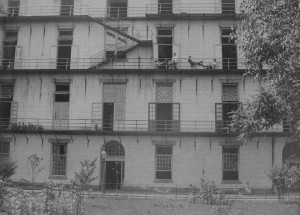– by Ph.D. candidate Mary Mahoney*
My dissertation focuses on the history of bibliotherapy, or the use of books as medicine. I recently travelled to the College of Physicians to examine the papers of Dr. S. Weir Mitchell, a physician perhaps best known for his invention of the “rest cure” to treat neurasthenia. While Mitchell certainly believed in the therapeutic value of reading in his own life – both reading and writing fiction throughout his career – his reputation has been shaped inexorably by his belief in the therapeutic value of restricting reading as a form of medicine. Neurasthenia was a disease that manifested itself in symptoms that affected the mind and body, including headaches, depression, numb limbs and exhaustion. While Mitchell genuinely believed that restricting reading was vital to resting the body and returning it to health, his female patients felt deprived because reading was a vital part of their lives.
Reading was an act that S. Weir Mitchell understood in bodily terms. Writing in Fat and Blood, his foundational work on the rest cure, he wrote about reading as an act that proved dangerous for bodies suffering from nervous exhaustion. Reading posed a threat for both the strain it placed on a reader’s eyes and the energy it drew from the body. A case study from Fat and Blood details these dangers.

